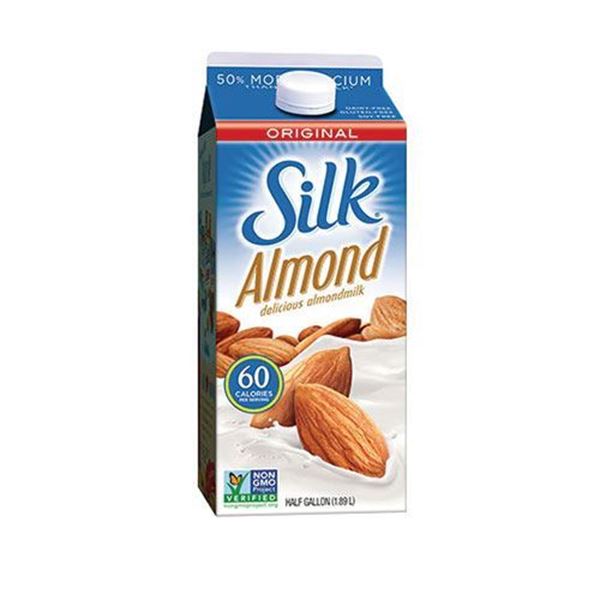
Oct 12, 2017 - Read on for the non-dairy yogurt brands RDs seek out when shopping. It's rich and creamy—even thicker than Greek yogurt—and the.
Reading the label should always be your first step when deciding what food to buy. This is because reading the label is essential to knowing what is really in your food. On the outside, it may seem like all yogurts are the same. However, if you know what to look for, the label on each yogurt can tell a different story. Ingredients List Although start out as plain yogurt, they often contain a variety of added ingredients, such as sugar, artificial flavors, dyes, stabilizers and preservatives. When possible, choose a yogurt without large amounts of added ingredients. Instead, try to choose a yogurt with few ingredients.
They should include milk, the bacterial cultures used to turn milk into yogurt and not much else. Ingredients are listed by weight, so avoid yogurts that have sugar listed near the top. Better yet, simply avoid all yogurts that have any type of added sugar on the ingredients list. Sugar can be listed under, including sucrose, high fructose corn syrup, fruit juice, cane sugar and agave nectar.
Nutrition Facts The nutrition facts on the label can give you some of the most specific information. The serving size and calories per serving are listed at the top. The nutrition facts can also tell you how many carbs, fat, protein and sugar are in each serving. Note that there may be more than one serving per container, meaning there are more calories too. Right now, the nutrition label does not distinguish added sugar from naturally occurring sugar, which can make it difficult to tell how much sugar has been added. However, labeling guidelines have so that the grams of added sugar per serving will also be listed on labels in the future.
The nutrition information will also tell you how much calcium and vitamin D each yogurt serving contains. Pengertian cerpen menurut para ahli. Ideally, your yogurt will contain vitamin D and a significant part of your daily calcium needs. This will be listed as percentage of daily value (% DV) on the label. For more information about how to read food labels, check out. Bottom Line: Reading the label is the first thing you should do when choosing a yogurt. The nutrition facts and ingredients list can tell you a lot about what's in your yogurt.
Dairy Free Yogurt

The main culprit that turns yogurt from a healthy food into an unhealthy one is. The average American's intake of added sugar has increased from 20 lbs (9 kg) of sugar per year in 1850 to over 160 lbs (73 kg) per year by the early 2000s ().
Dairy Free Greek Yogurt
It's estimated that sugar-sweetened beverages are responsible for 40% of that increase. However, processed foods with added sugar, including sweetened yogurts, help contribute to it (). Eating too much sugar can be very damaging to health.
Research has linked it to the development of obesity, heart disease, metabolic dysfunction, liver disease and type 2 diabetes, among other problems (,, ). Although yogurt already contains some natural sugar in the form of lactose (milk sugar), food companies often add large amounts of simple sugars to make yogurt taste sweeter. Plain yogurt typically contains around 10–15 grams of carbs per cup (245 grams), but flavored or sweetened yogurts can easily contain more than 30 grams per serving (). To choose a healthy yogurt, pick the brands with the least sugar per serving. This means as little as possible over the 10–15 grams per cup (245 grams) that is already present from lactose. Typically, the healthiest choice is plain, unflavored yogurt. But if you don't like plain yogurt, there are a few things you can do instead.
One option is to sweeten it yourself with your favorite fresh fruit. You can also make your own chia seed yogurt to make plain yogurt less tart. And, as a bonus, you'll get extra protein, fiber and healthy fats with the chia seeds. It is as easy as mixing 2 cups (473 ml) of yogurt with 1.5–2 tablespoons (22–30 ml) of and letting it sit overnight in the fridge. Bottom Line: Added sugar can turn a health food into a junk food.
Choose plain yogurt when possible and always read the label to find out if sugar has been added. Yogurt can be made from whole, low-fat or fat-free milk. Health experts often recommend low-fat dairy products because most people already eat more calories than they need. As a result, most yogurts are made from low-fat or fat-free milk. However, reduced-fat yogurts typically contain the most sugar, which is added to compensate for the loss of flavor from. So if you choose low-fat yogurt, be sure to look for one without added sugar. Full-fat yogurt is also available.